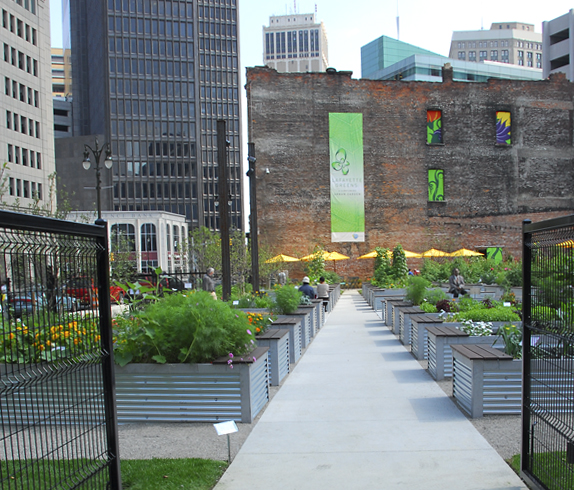
Disturbed by the lack of investment in downtown Detroit, former CEO of the Compuware Corporation, Peter Karmanos, Jr., bought the vacant property and employed the help of Kenneth Weikal Landscape Architecture to transform the site of the former skyscraper into a community garden open to all Detroit residents. Now, residents of downtown Detroit can visit the gardens and find orchards with various types of apples, peaches, and pears, patches of baby lettuce, beds full of colorful flowers, and even an aromatic lavender garden. The greens are host to a weekly farmer’s market as well.
While the presence of a vibrant garden in the mostly-steel-and-concrete downtown might be surprising to some people, the garden has provided a number of benefits to the community. The impact of the gardens goes beyond providing food to an area with limited access to organically-grown produce. The Lafayette Greens were designed to be an aesthetically-pleasing respite from Detroit’s dense urban development, and it is filled with benches where the workers of downtown Detroit are welcome to stay and enjoy the surrounding beauty. The garden has also been a useful tool to educate Detroit residents on the benefits of gardening and growing local produce. Since becoming downtown Detroit’s first urban garden in 2010, numerous others have sprung up throughout the city.
The greens are tended to by Compuware employees, whose headquarters are located nearby, as well as local volunteers. Most of the produce grown is donated to various local food banks, but residents are encouraged to take home fruits and vegetables that they have tended to. The success of the Lafayette Greens illustrates how much of an impact a well-built green space can impact a blighted community.
For more information, visti: http://www.compuware.com/en_us/about/lafayette-greens-the-garden.html